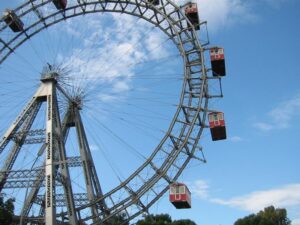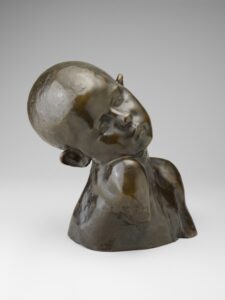Promenade | In the Not So Good Times | Rina Tanaka
In the Not So Good Times
Text by Rina Tanaka
—
(This article is originally written in Japanese and translated into English.)
Reactions of the Music and Theater Scenes to the War in Ukraine
“Not so good times.” On February 24, 2022, Japanese conductor Michiyoshi Inoue began his short speech before playing an encore song at the Tokyo Philharmonic Orchestra’s 144th Subscription Concert in Tokyo Opera City Concert Hall. Obviously, this statement by the 75-year-old maestro was an implicit response to Russia’s military invasion of Ukraine reported on the night before the concert in Japan time.
Reactions of the music and theater scenes in the world on that conflict were quick and have become intense. Kirill Petrenko (chief conductor of the Berliner Philharmoniker), Semyon Bychkov (chief conductor and music director of the Czech Philharmonic), Vladimir Jurowski (general music director of the Bavarian State Opera)—all conductors with Russian roots—immediately issued a statement.
In Russia too. Elena Kovalskaya, artistic director of the Meyerhold Theatre and Cultural Center (TsIM) resigned from her post on February 24. She wrote in a Facebook post, “It is impossible to work for a murderer and get a salary from him.”(1) The International Association of Theatre Critics Association (AICT-IATC) exhibited a message from the Russian Section to the Ukraine Section through all available channels including the Japan Section. The message states, “We express our protest by all available means – manifesting and signing petitions against the war. We feel shame and helplessness.”(2) While writing this article, I have just heard the news that Thomas Sanderling has resigned from the chief conductor and artistic director of the Novosibirsk Philharmonic Orchestra in protest against the Russian invasion of Ukraine.
“Play Without Gergiev”
One of the benchmarks in the reactions was a series of reports about Valery Gergiev. On February 24, the Vienna Philharmonic decided to play in three days at the Carnegie Hall in New York without this “putinfreundliche Stardirigent” (pro-Putin star conductor).(3) “Russian” pianist Denis Matsuev, who would have been a soloist on the first night, was also dropped from the concerts. So far, world prestigious groups, such as Teatro La Scala in Milan, the Philharmonic de Paris, the Verbier Festival in Switzerland, and the Rotterdam Philharmonic Orchestra have either suspended or completely dissolved their relationship with Gergiev.
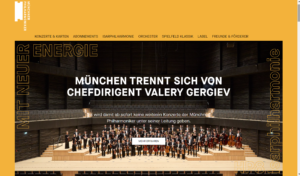 On March 1, Munich mayor Dieter Reiter stated on the dismissal of Gergiev from a chief conductor of the Munich Philharmonic Orchestra: “a clear signal to the orchestra, its audience, the public and the city council would have been indispensable to allow us to continue working together. Since this was not forthcoming, we have no choice but to let him go.”(4) As given by the expression of the “city council,” we should not understand this statement without considering an institutional framework of the Munich Philharmonic nor the cultural policy in German states.
On March 1, Munich mayor Dieter Reiter stated on the dismissal of Gergiev from a chief conductor of the Munich Philharmonic Orchestra: “a clear signal to the orchestra, its audience, the public and the city council would have been indispensable to allow us to continue working together. Since this was not forthcoming, we have no choice but to let him go.”(4) As given by the expression of the “city council,” we should not understand this statement without considering an institutional framework of the Munich Philharmonic nor the cultural policy in German states.
“Witch Hunting” in the Cultural Sector
The resolute attitude towards artists with certain political affiliations, however, reminded me of Germany’s denazification in the post-war era. In this regard, Daniel Barenboim’s “Concert for Peace” in March 6 at the square of the State Opera in Berlin, where “un-German” books were burned in 1933, means historically more than an event solely for the ongoing conflict.
At the Concert for Peace, Barenboim, whose wife is a Russian pianist, and his grandparents who fled the Soviet Union to Argentina during World War II and live in Belarus now, warned that cultural boycotts would only end in a “witch hunt” against Russian artists.(5)
Recently, the German Minister of Culture and Media Claudia Roth had made a similar statement: “I warn against the tendency towards boycotts against Russian cultures and arts and being suspicious […] of artists because they are Russians.”(6)
These warnings are not to prevent what will happen but to stop what has already happened and seemingly continues to happen. In the past few weeks, Russia-related music was replaced or canceled at many concerts all over the world. If you check the news in the art and music section, nationalities and cultural backgrounds related to Russia appeared more frequently than usual. Russian artists, especially those who are working internationally, were forced to make their political attitude clear and immediately—being silent is also counted as an “answer”. In a blink of an eye, our daily lives turned into the world in a dichotomy between “enemies” and “allies.”
I think I should not compare it with other cases without considering each particular context, but some cases under the pandemic came to my mind. In the early spread of Covid-19 in January 2020, Rome’s Santa Cecilia Conservatory announced to suspend all “oriental” students, regardless of whether they recently traveled or not. Two years after that, Japan’s entry ban has blocked many international students. You don’t have to even watch Ibsen’s An Enemy of the People for remembering the logic of “A friend yesterday can be an enemy today” because, I dare to say, it happened so mundanely.
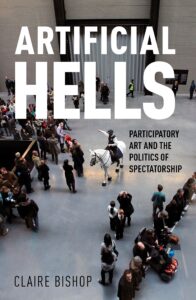 Art vs. Politics, or the Politics of the Art
Art vs. Politics, or the Politics of the Art
Following debates on arts, cultures, and politics, we often come across a discourse that “arts, cultures, and politics should not be confused.” Indeed, this discourse is very important in a situation when the world, including arts and cultures, is rapidly dividing between enemies and allies. That’s why Daniel Froschauer, Chairman of the Vienna Philharmonic, emphasized the dismissal of Gergiev, “culture should not be a plaything of political disputes” and “music always has something that connects us and not separates us.”(7)
However, therefore, I suppose we need to keep an eye on what we can see on the premise that arts and cultures are political no matter what. This premise is not oriented to the political art that can be beneficial to any type of government or certain authorities. Art always responds to its “environment,” and meanwhile, “it has the capacity to communicate on two levels – to participants and to spectators – the paradoxes that are repressed in everyday discourse, and to elicit perverse, disturbing and pleasurable experiences that enlarge our capacity to imagine the world and our relations anew.”(8)
Based on Claire Bishop’s art theory, it is not enough to regard the ongoing artistic reactions only as a mirror of the tense international situation, or as a desire for idealistic solidarity. In the sudden “environmental” changes, it is essential to pay attention to disturbing questions that arise from art.
A Program Change by Jurowski
It was broadly reported, also in Japan, that Vladimir Jurowski changed the program for the concert of the Berlin Radio Symphony Orchestra on February 26 and 27. The Ukrainian national anthem composed by Michailo Werbizki was newly added at the beginning of the concert. Instead of Tchaikovsky’s Slavic March, Werbizki’s Symphony Overture No. 1 was performed. In an eight-minute speech after the Ukrainian anthem, Jurowski clearly clarified his position in the current situation and carefully explained his intention of changing the program, especially taking the historical backgrounds of each song into account.
Notably, Jurowski mentioned Tchaikovsky’s multi-faced character. Whereas Tchaikovsky was a monarchist under the strong patronage of Emperor Alexander III, his composition was lyrical and dissident. “Tchaikovsky unconsciously did what Shostakovich consciously did.”(9) Jurowski continued detailed elements of Tchaikovsky’s composition: both Slavic March and the last part of Symphony No. 5 describe the “empty and noisy state power, the power of the glorious tsar”—Jurowski said in the end, “Personally, I think the Symphony’s conclusion is extremely menacing and very actual.”
Jurowski’s speech answers a critical question of the times from social and artistic perspectives: Why do we dare to hold a concert now of all times? To say no to the invasion publicly and collectively, instead of keeping silent. To appreciate musical works, which are always interpreted and played in various ways depending on the actual condition of each performance, in light of the history and current contexts of the work. They would echo what Edward Said explained: not in “a sense […] that we don’t need to know about the rest of the world” but with “an awareness of the overall society and the destiny of where we are going.”(10) In this article, I want to rephrase the “awareness” with “don’t stop asking oneself.”
Why Are We Doing This Program Now?
Where are we going now? Instead of answering this huge, challenging question, let’s ask a more concrete one. Why are we doing this program now?
Looking back to my memory, I encountered this question first when I investigated a situation of musicals in Vienna. There was harsh criticism against musicals that were run with public subsidies in Vienna’s some public theaters. These theaters persistently responded to them and tried displaying their raison d’etre. It helped me a lot to keep my eyes on word choices in articles about the invasion, because I already read articles in the past, with a certain tendency of paying great attention to the nationality of artists for an “Austrian musical.”
While continuing to think about the question, I became one of the subjects of that question. Every time I went to a theater performance or musical concert, I tried to understand what happened there. It includes a critical examination of my perception while I was watching the performance. Yes, everyone has an individual experience in art appreciation. However, when I started asking “why I felt that way,” the perception was sometimes split into two. The one fluctuated with my actual condition. The other does not. A clear example of the former is a change of my personal space before and during the pandemic: After the resume of theater performances, already in the summer of 2020, close contacts between performers on stage frightened me a lot.
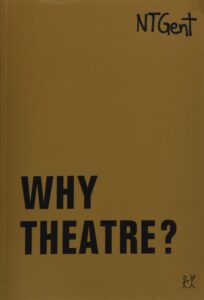 Come back to the questions. Why are we doing this program now? Where are we going now? They remind me of a book Why Theater? published in 2020. It contains answers from 106 artists to the question in the title: “Why theater?” The very first answer was given by Syrian playwright Muhammad Al Attar. He looked back on March 2011 when the Syrian revolution began. As the one who constantly asked the same question in a changing social and political situation, Al Attar stated at the end of his answer:
Come back to the questions. Why are we doing this program now? Where are we going now? They remind me of a book Why Theater? published in 2020. It contains answers from 106 artists to the question in the title: “Why theater?” The very first answer was given by Syrian playwright Muhammad Al Attar. He looked back on March 2011 when the Syrian revolution began. As the one who constantly asked the same question in a changing social and political situation, Al Attar stated at the end of his answer:
I know that we create theatre as witness in this post-truth era of declining politics and rising fascism. We create it as a space in which performers and audiences explore and deliberate on issues and questions to better understand ourselves and our world—and yes, we create theatre for the pleasure we experience during rehearsals or sitting there in the dark watching the stage. But I am also confident, that times of great uncertainty and change, like the ones we are living today, will bring new challenges to our understanding of the role and importance of theatre, and with them new answers—answers that can only come through experimenting and rumination.(11)
Now, let’s return to the beginning. Michiyoshi Inoue said, “not so good times.” It does not only point to the present, but it has been “not so good.” Anyway, whether it’s “good” or “not good,” the fragments of thoughts that I referred to in this article mark a certain direction. If art can have the “capacity to communicate on […] the paradoxes that are repressed in everyday discourse” and “enlarge our capacity to imagine the world and our relations anew,” art experience means much more than healing one’s heart or hoping that the world will be united for peace. Whether consciously or not, art experience has a performative act to keep a distance from reality and take another look at it. It is not a stiff process. Rather, it makes you feel a little bit easier in the end. In this era of uncertainty.
—–
(1) Broadway World, “Director Of Moscow’s State Theater Resigns In Protest Of Ukraine Invasion,” February 24, 2022.
(2) The International Association of Theatre Critics Association (AICT-IATC), “TO: Ukraine Section, International Association of Theatre Critics (AICT-IATC),” February 25, 2022. The translation in Japanese was issued on February 26, 2022.
(3) APA, „Wiener Philharmoniker spielen ohne Gergiev in New York,“ 24. Februar 2022.
(4) Münchner Philharmoniker, “Pressemtiteilung 1. März 2022“, 1. März 2022.
(5) Deutsche Welle, “Culture rallies for Ukraine in Berlin,” March 6, 2022.
(6) Die Zeit, „Roth warnt vor Boykott russischer Kunst und Kultur“, 4. März 2022.
(7) APA, 24. Februar 2022.
(8) Claire Bishop, Artificial Hells: Participatory Art and the Politics of Spectatorship, Verso Books, 2012, p. 284.
(9) According to the radio broadcasting by the Deutschlandfunk Kultur.
(10) Daniel Barenboim and Edward W. Said, Parallels and Paradoxes: Explorations in Music and Society, Ara Guzelimian, ed., Vintage Books, p. 149.
(11) Mohammad Al Attar, “A Constant Journey of Doubt and Experimentation,” In: Kaatje De Geest, Carmen Hornbostel and Milo Rau, eds., Why Theatre?, Verbrecher Verlag, p. 18.
(2022/03/15)
